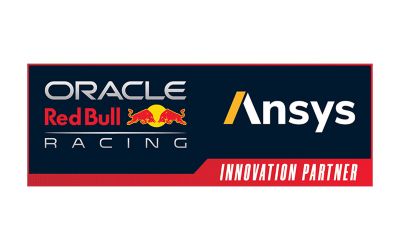Case Study
-
-
Access Free Student Software
Ansys empowers the next generation of engineers
Students get free access to world-class simulation software.
-
Connect with Ansys Now!
Design your future
Connect with Ansys to explore how simulation can power your next breakthrough.
Countries & Regions
Free Trials
Products & Services
Learn
About
Back
Products & Services
Back
Learn
Ansys empowers the next generation of engineers
Students get free access to world-class simulation software.
Back
About
Design your future
Connect with Ansys to explore how simulation can power your next breakthrough.
Free Trials
“By Integrating Ansys’ technology into our design processes, our team iterates aerodynamics designs much faster, giving us the edge against our competition on the track.”
— Matt Cadieux, CIO/Oracle Red Bull Racing
Introduction
Since 2008, as part of an Innovation Partnership with Ansys, Oracle Red Bull Racing has been using Ansys simulation technology across a range of critical application areas. The focus of the partnership has grown from an initial focus on aerodynamics simulation to solving cooling problems, managing and optimizing materials usage and IP, and ensuring the vehicle is designed to protect the driver in the event of a crash.
Challenges
Formula 1 engineers must balance a multitude of competing design objectives for various track conditions. So, the engineers must perform their multidisciplinary design optimization studies not just once – but for every single race – often just 7 days apart. Not only do they need highly accurate design tools that give them the ability to deliver a race-winning advantage within the rules, but they also need the speed to do this between races.
Engineering Solution
The Aerodynamics Team have made Ansys Fluent Meshing their pre-processing tool of choice for generating models and creating computational meshes, and they have chosen Ansys Fluent CFD as the core component in their virtual wind tunnel. The Oracle Red Bull Racing team also uses Fluent to develop the cooling circuit and cooling capability of the car, related to the Power Unit (PU). Ansys Granta MI materials information management software is used to keep a comprehensive, single source of truth for all material information available to the team. With Ansys LS-DYNA, engineers can test impacts using virtual models and collect even more data than is available from physical crash testing.
Benefits
- Confidence in Fluent to set up an aerodynamics simulation and let it run without monitoring it, freeing up time for other vital tasks
- Designing a cooling system to maximize the power unit’s performance within the regulations, with virtual simulation reducing for on-track testing and providing the ability to run more iterations in a shorter period to optimize the cooling parameters
- Having one source of truth for all materials properties with Granta MI removes the risk of team members accessing out-of-date information
- Improving the simulation of crash testing with LS-DYNA reduces the physical testing required, saving time and investment while ensuring cars meet the crucial safety regulations of the sport

Recommended Content
Let’s Get Started
If you're facing engineering challenges, our team is here to assist. With a wealth of experience and a commitment to innovation, we invite you to reach out to us. Let's collaborate to turn your engineering obstacles into opportunities for growth and success. Contact us today to start the conversation.